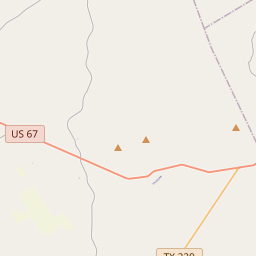Chalk Mountain Cemetery
Historical marker location:






The village of Chalk Mountain originated as a trading center before the Civil War. The earliest burial at Chalk Mountain Cemetery, the only burial ground to have served this community, is that of Abigal Davis (d. 1874), but the presence of unmarked burials indicates possible earlier use. Confederate veteran Hiram Berry Rogers (1840-1929) deeded the cemetery to the county in 1915. Over 350 graves, including those of Rogers and veterans of the Civil War, World Wars I and II, and the Korean War, are interred here. It has been maintained by a cemetery association since 1959. (1991)
As one of the most visible programs of the Texas Historical Commission (THC), historical markers commemorate diverse topics in Texas history, including: the history and architecture of houses, commercial and public buildings, religious congregations, and military sites; events that changed the course of local and state history; and individuals who have made lasting contributions to the state, community organizations, and businesses.
Texas is known for its love of football, and the state has produced many great football players, including legends like Tom Landry, Earl Campbell, and Vince Young.
In the late 19th century, Somervell County became a prominent center for agriculture and ranching. Cotton was the main crop grown in the county, and many farms and plantations flourished during this time. Additionally, the discovery of large limestone deposits in the county led to the establishment of several quarries, which became an important industry for the area.
One of the most significant events in Somervell County's history occurred in the early 20th century. In 1929, construction began on the Glen Rose Dam, which created the picturesque Lake Granbury. This provided water for irrigation and recreational opportunities, leading to the growth of tourism in the area.
Today, Somervell County continues to thrive with a diverse economy that includes tourism, agriculture, and small businesses. The county is known for its natural beauty, with attractions such as the Dinosaur Valley State Park, which features fossilized dinosaur footprints, and the Fossil Rim Wildlife Center, a popular safari park. The historic downtown area of Glen Rose remains a charming destination for visitors, showcasing its rich history through numerous preserved buildings and museums.
Somervell County Timeline
This timeline provides a condensed summary of the historical journey of Somervell County, Texas.
- 1849 - Somervell County is established as a county by the Texas state legislature.
- 1850 - The first settlers begin arriving in Somervell County.
- 1852 - The county's first post office is established at Glen Rose.
- 1860 - The population of Somervell County reaches 604 residents.
- 1861 - The Civil War begins, and many men from Somervell County join the Confederate Army.
- 1875 - The Texas Central Railroad is completed, passing through Glen Rose and boosting the local economy.
- 1881 - Dinosaur tracks are discovered along the Paluxy River, leading to increased tourism and scientific interest in the area.
- 1906 - The creation of the Brazos River Authority brings hydroelectric power to Somervell County.
- 1929 - The Great Depression heavily impacts the county's agricultural and oil industries.
- 1969 - The Comanche Peak Nuclear Power Plant is completed, providing a major source of employment and revenue for Somervell County.
- 1990 - The population of Somervell County reaches 6,333 residents.
- 2013 - The creation of the Fossil Rim Wildlife Center attracts tourists from around the world.
- 2019 - Somervell County celebrates its 170th anniversary since its establishment.